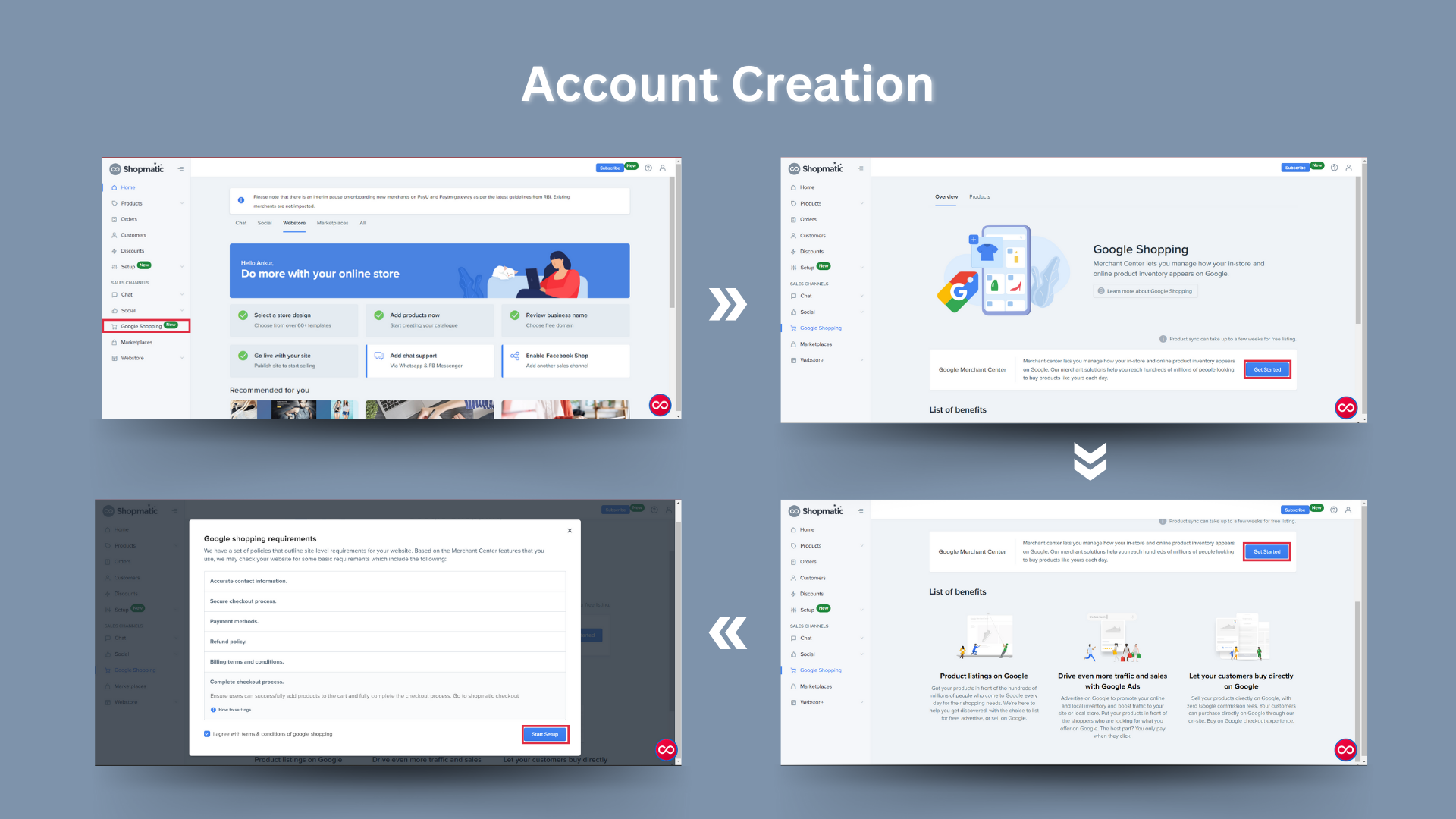In the ever-evolving landscape of e-commerce, Google Shopping emerges as a powerful tool for entrepreneurs and business owners seeking to enhance product visibility and drive sales. In this comprehensive guide, we’ll delve into the intricacies of Google Shopping, combining insights from multiple sources to provide a detailed roadmap for mastering Google Shopping in Singapore.
Introduction: Unlocking the Potential of Google Shopping
When diving into the digital marketplace, Google Shopping stands out as more than just a search engine. It has become an important component of the Google ecosystem, offering a unique stage for businesses to showcase their products and connect with a wider audience. As entrepreneurs increasingly recognize the value it brings, it becomes important to understand how Google Shopping works and how it can be utilized for optimal results.
Getting Started: Listing Your Products on Google Shopping
Google Shopping serves as a bridge between consumers and businesses, presenting an opportunity for merchants to feature their products prominently. The process of listing products on Google Shopping involves a few simple steps, ensuring that your products appear at the top of Google search results.
To begin on this journey, sign up for a Google Merchant Center account—a swift process taking just a minute. Verify and claim your domain, an essential step for credibility. Once done, navigate to the Products page, click on Feeds, and add new Primary feeds. Opt for Website crawl (Automated feed), allowing Google to crawl your product list and populate them on “shopping.google.com.”
It’s worth noting that, at present, Google Shopping is exclusively available in India and Singapore. You can leverage this exclusivity to your advantage by targeting a more localized audience.
Understanding Google Shopping Features
As a consumer, Google Shopping provides a unique experience, allowing users to explore and purchase products from a variety of online retailers. The platform’s interface displays product images, descriptions, prices, and reviews, enabling users to make informed decisions. The search results are filtered based on criteria such as price, brand, seller, and availability, offering a convenient way to compare and find the best deals.
For merchants using Shopmatic, the benefits are substantial. Increased visibility is one of the key advantages, with Google Shopping listings appearing at the top of Google search results. This prime positioning enhances the likelihood that potential customers will not only see but also click on your products.

Onboarding and Account Creation: A Step-by-Step Guide
Whether you are a new user or an existing one, the onboarding process for Google Shopping on Shopmatic is streamlined. For new users, the journey begins in the dashboard. Click on ‘Google Shopping‘ and follow the prompts, agreeing to the terms and entering necessary details like the Google Merchant Centre ID.
Existing users, too, can seamlessly integrate Google Shopping into their strategy. The steps involve entering the Merchant Centre ID, logging into your Gmail account used for Google Merchant Center, and approving the connection to Shopmatic Multi-Client Account.
Both new and existing users proceed to fill in essential details like service coverage, delivery time, and delivery fee. The final step involves enabling ‘Google Shopping’ on Shopmatic’s page, ensuring your products are synced and ready for increased visibility.

Benefits of Google Shopping for Shopmatic Merchants
For entrepreneurs utilizing Shopmatic, the advantages of Google Shopping are clear. The platform offers not just visibility but targeted advertising options, allowing businesses to reach specific audiences based on location, language, and device. This level of precision enhances the effectiveness of advertising campaigns, leading to higher conversion rates.
Moreover, the cost-effectiveness of listing on Google Shopping is a major win. Shopmatic merchants can list their products without incurring any charges. This makes it a budget-friendly strategy for businesses looking to boost their online presence and drive sales.
Unveiling the Power of Google Shopping
Transitioning to a broader perspective, let’s understand the inner workings of Google Shopping and understand why it has become an integral part of the digital marketing strategy for businesses worldwide.
The Role of Google Shopping in the Google Ecosystem
Google Shopping’s significance goes beyond its role as a mere search engine. While Google’s history includes experiments like Google+, the Shopping interface has become a focal point for online purchases. Consumers are increasingly turning to Google Shopping, and businesses are recognizing the value it offers.
How Google Shopping Works from a Consumer Perspective
When consumers engage with Google Shopping, they are essentially browsing products from advertisers and sellers featured on the platform. The ranking of product listings is determined by relevance to the user’s search terms, with personalized results based on recent activity, such as previous searches.
The algorithms behind the scenes, controlled by Web & App Activity and personal results settings, work cohesively to maximize the relevance of listings to individual users. Additionally, the presence of the “Sponsored” label indicates that advertiser payments to Google may influence rankings, providing a glimpse into the intricacies of the platform.
Customizing Google Shopping Results
Consumers have the power to tailor their Google Shopping experience by sorting or filtering results based on price, product category, and brand. This customization enhances the user experience, allowing individuals to find products that align with their preferences more efficiently.
For those concerned about data privacy and control, Google offers tools such as My Activity and Ads Settings. These features empower users to manage and monitor their online activity, block specific advertisers, and opt out of personalized ads.
 Ensuring Compliance and Quality: Product Information on Google Shopping
Ensuring Compliance and Quality: Product Information on Google Shopping
Sellers and advertisers featured on Google Shopping are engaged in commercial activity and must adhere to specific policies outlined by Google. Furthermore, these policies dictate what can and cannot be listed on the platform, ensuring a level playing field for all participants.
Google Shopping actively removes items that violate these policies and may suspend sellers who fail to comply. Additionally, advertisers play a crucial role in maintaining the integrity of the platform by providing accurate and updated product details regularly.
The Dynamics of Shopping Reviews and Ratings
Reviews and ratings play a pivotal role in the consumer decision-making process. Google gathers reviews through the voluntary Google Customer Reviews program and from advertisers, sellers, and third-party review providers. These reviews, both positive and negative, contribute to an overall rating displayed on Google.
An automated system processes these reviews, filtering out spammy or inappropriate content to maintain the authenticity of the information. The chronological sorting of reviews provides users with a comprehensive view. Additionally, the ratings are aggregated from multiple sources to present an overall assessment of a product.
Navigating the Purchasing Process on Google Shopping
Once consumers find a product of interest on Google Shopping, the platform provides details such as the item price and applicable taxes. Clicking on the product takes users to the seller’s site, where they can make the final purchase.
It’s important to note that shipping costs may vary, and users are encouraged to check the final price on the seller’s website for transparency. Additionally, information about shipping methods, insurance, and warranties can be found on the seller’s site.
Each seller is responsible for their customer support, emphasizing direct contact for any post-purchase issues. This approach ensures a streamlined resolution process and a personalized customer experience.
Legal Considerations and Consumer Notices
Google Shopping is not just a digital marketplace; it also adheres to legal and tax considerations. In Connecticut, for example, consumers are notified about the potential sales and use tax on purchases delivered to the state. This transparency ensures that purchasers are aware of their responsibilities and rights concerning taxation.
Conclusion: Mastering Google Shopping for Sustainable Business Growth
In conclusion, Google Shopping is not merely a platform but a dynamic ecosystem that empowers both consumers and businesses. For entrepreneurs, understanding the nuances of Google Shopping can be a game-changer in the competitive world of e-commerce.
Entrepreneurs can strategically use Google Shopping by following a step-by-step guide for onboarding. Additionally, understand the benefits for Shopmatic merchants, and should comprehend consumer interaction strategies. Furthermore, the platform’s focus on quality, transparency, and user customization makes it a valuable tool for businesses aiming to boost online presence and achieve sustainable growth.
In the digital age, where visibility and user trust are most important. Mastering Google Shopping emerges as a key strategy for entrepreneurs navigating the dynamic landscape of online retail. As the platform continues to evolve, those who embrace its potential stand to gain not just increased sales. They also stand to build a lasting connection with their target audience.

